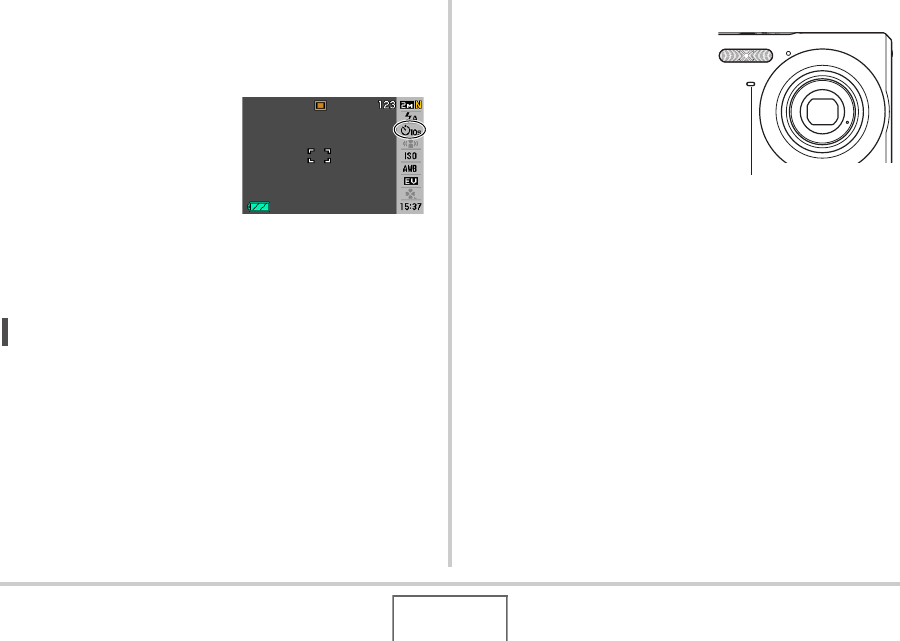User Guide
Table Of Contents
- UNPACKING
- CONTENTS
- QUICK START BASICS
- INTRODUCTION
- GETTING READY
- SHOOTING A SNAPSHOT
- SHOOTING A MOVIE
- USING BEST SHOT
- ADVANCED SETTINGS
- Changing the Focus Mode
- Correcting Image Brightness (EV Shift)
- Controlling White Balance
- Specifying ISO Sensitivity
- Specifying the Metering Mode
- Using the Camera’s Filter Effects
- Controlling Image Sharpness
- Controlling Color Saturation
- Adjusting Image Contrast
- Date Stamping Snapshots
- Using the On-screen Histogram to Check Exposure
- Other Useful Recording Functions
- VIEWING SNAPSHOTS AND MOVIES
- EDITING IMAGES
- USING AUDIO
- MANAGING YOUR FILES
- DELETING FILES
- OTHER SETTINGS
- Configuring Camera Sound Settings
- Turning the Startup Screen On or Off
- Specifying the File Name Serial Number Generation Rule
- Changing the Camera Date and Time Setting
- Using World Time
- Changing the Display Language
- Changing the USB Port Protocol
- [_] (REC) and [>] (PLAY) Button Settings
- Formatting Built-in Memory
- PRINTING
- USING THE CAMERA WITH A COMPUTER
- APPENDIX

76
SHOOTING A SNAPSHOT
1. In the REC mode, press [SET].
2. Use [S] and [T] to select the third option from
the top (Self-timer).
3. Use [W] and [X] to
select the self-timer
type and then press
[SET].
This causes an indicator
identifying the selected self-
timer type to appear on the
monitor screen.
4. Press the shutter button to shoot.
NOT
E
• You also can change the self-timer setting using the menu
that appears when you press [MENU] (pages 49, 214).
Using the Self-timer to Shoot an Image
• The image is not shot right
away after you press the
shutter button. Instead,
shooting starts after the
preset time elapses. The
self-timer lamp flashes
while the countdown is
being performed.
• You can interrupt an
ongoing self-timer
countdown by fully pressing the shutter button while the
self-timer lamp is flashing red.
Self-timer Lamp










